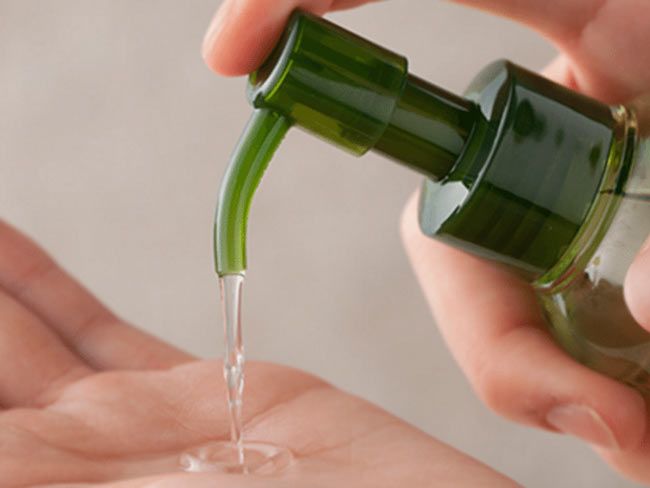## Common Mistakes When Using Cleansing Oil:
Mixing with Water Before Application
A common mistake is mixing the cleansing oil with water before applying it to the skin. This interferes with the oil’s effectiveness, so it’s important to massage the oil onto your dry skin in circular motions and only then introduce water to emulsify it.
Using Cold Water
The temperature of the water is crucial when using cleansing oil. Cold water can cause the oil to solidify, reducing its efficacy. Always opt for warm water to ensure a thorough cleanse.
After cleansing with oil, rinse your face with warm water to remove all traces of the oil and your makeup. This ensures that your pores are clear and reduces the risk of breakouts.

Rinse your face with warm water after using cleansing oil.
Look for a product with a unique 3-layer structure: the top layer removes makeup and dirt, the middle layer provides a deep cleanse, and the bottom layer moisturizes and tightens pores. Ingredients like indigo, lavender, sage, black currant, and peppermint offer a soothing, deep-cleaning experience.
Not Rinsing Thoroughly
It is essential to completely rinse off the cleansing oil. Otherwise, it may lead to breakouts and interfere with the performance of your other skincare products.
Using Too Much Oil
Using an excessive amount of cleansing oil can make it challenging to achieve a thorough cleanse. The residual oil on the skin can clog pores and lead to unwanted breakouts.
Skipping the Second Cleanser
If you experience breakouts after using cleansing oil, it might be because you’re not properly rinsing or wiping off the oil. Make sure to use a gentle secondary cleanser after your oil cleanser to ensure all traces of it are removed.
Not all oils are suitable for cleansing. Some oils are more likely to cause breakouts, especially if your skin is not compatible with them.

Not all cleansing oils are suitable for every skin type.
Not Drying Hands Before Using Cleansing Oil
Ensure your hands are clean and completely dry before using cleansing oil. This prevents the oil from emulsifying in your hands, ensuring it remains effective when applied to your face.
Not Following Manufacturer’s Instructions
Read and follow the instructions provided by the manufacturer. These guidelines will help you use the right amount of product, understand how long to cleanse for, and provide aftercare instructions.
If you have oily skin, opt for an oil-free cleansing product that helps control sebum production. For dry skin, choose a nourishing cleansing oil that won’t strip your skin of moisture. If you have sensitive skin, select a gentle formula free from alcohol and fragrances.






























